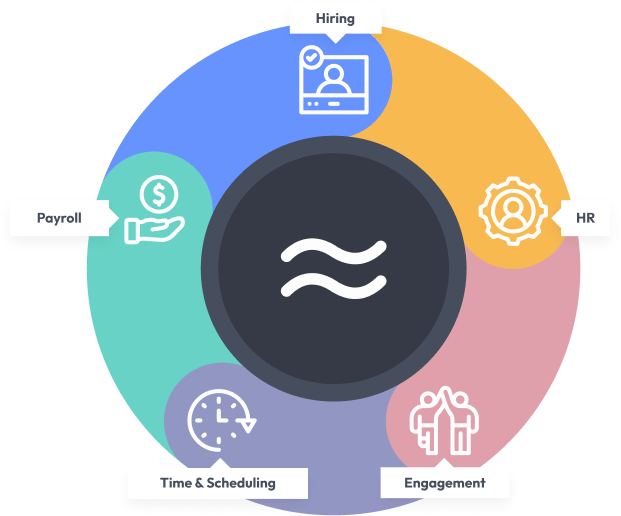How to Hire Bricklayers: A Practical Guide for Small Business Owners
If you’ve ever tried to hire bricklayers for your business, you know it’s not as simple as tossing up a job ad and hoping for the best. In fact, finding reliable masonry workers can feel like searching for that last brick at the bottom of a pallet—tedious, sometimes frustrating, but absolutely essential for building something solid. Whether you’re running a restaurant franchise, managing a construction crew, or just need a few extra hands for a big project, this guide will walk you through the process of recruiting skilled brick masons and stone workers who’ll stick around and get the job done right.
Understanding the Role: What Makes a Great Bricklayer?
Let’s start with the basics. Bricklayers, sometimes called masonry workers, are the backbone of any solid structure—literally. They lay bricks, blocks, and stones to create walls, walkways, fireplaces, and more. But it’s not just about muscle; it’s about precision, stamina, and an eye for detail. If you ask me, it’s as much art as it is science.
The Skills You Should Look For
- Physical strength and endurance: These folks are on their feet all day, lifting heavy materials.
- Attention to detail: A crooked wall isn’t just unsightly—it’s unsafe.
- Teamwork: Most jobs require close coordination with other trades.
- Problem-solving: Weather delays? Odd angles? Good bricklayers adapt on the fly.
For a deeper dive into what makes employees stick around and thrive in tough roles, check out this insightful piece on employee turnover in the restaurant industry. The lessons apply surprisingly well to construction and masonry laborers too.
Where to Find—and How to Attract—Top Masonry Talent
Here’s the thing: the old “help wanted” sign taped to your window just doesn’t cut it anymore. To hire masonry workers, you need to meet them where they are—often online or through word-of-mouth in tight-knit trade communities.
Modern Sourcing Strategies
- Digital recruiting platforms let you cast a wider net and screen candidates efficiently.
- Consider leveraging job boards like Indeed or even Instagram for recruitment, especially if you want to reach younger or tech-savvy bricklayers.
- Tap into local trade schools or apprenticeship programs—these are goldmines for fresh talent eager to prove themselves.
- Don’t overlook referrals from your current crew. Sometimes, the best hires come from trusted recommendations.
Want more creative ideas? Check out these unique recruitment ads that have worked wonders for other businesses.
Crafting an Irresistible Job Posting
Your job post is your handshake—it sets the tone. Be clear about pay (competitive wages are a must), expectations, and growth opportunities. For inspiration, see these effective job posting examples for hourly workers.
And don’t forget to highlight benefits! According to this report on the impact of benefits on recruitment and retention, perks like healthcare or flexible schedules can make all the difference in attracting top bricklayers.
Avoiding Common Pitfalls in Bricklayer Recruitment
If you’ve ever felt burned by a bad hire, you’re not alone. The cost of turnover—especially in skilled trades—can be staggering. According to industry research, losing a single frontline worker can cost nearly $6,000 on average (source). That’s money better spent building your business.
Screening and Interviewing: Don’t Skip the Details
- Use structured interviews with scenario-based questions. Check out these STAR method interview tips for evaluating problem-solving skills.
- Ask about past projects—don’t be afraid to request references or even photos of their work.
- If possible, set up a practical test. Watching someone lay a few bricks tells you more than a resume ever could.
- Consider using digital tools for background checks and document collection; platforms like Workstream’s hiring automation suite can streamline this step and save hours per hire.
And here’s a little emotional truth: hiring is as much about gut feeling as it is about credentials. If something feels off during the interview, trust your instincts—but back them up with data whenever possible.
The Legal Side: Compliance and Documentation
This part’s not glamorous, but it’s non-negotiable. Make sure you’re following all local labor laws regarding pay, overtime, and safety. The U.S. Department of Labor has a handy resource on wage recordkeeping requirements. And if you’re not sure where to start with onboarding paperwork, these onboarding templates can help keep you organized and compliant.
(Disclaimer: This article is for informational purposes only and does not constitute legal advice. Always consult with a qualified attorney or HR professional for specific guidance.)
The Secret Sauce: Retaining Your Best Stone and Brick Workers
You’ve found great people—now how do you keep them? Retention is where most businesses stumble, especially when it comes to skilled trades like masonry. High turnover isn’t just expensive; it chips away at your team’s morale and productivity (learn more about turnover causes here).
Building Loyalty Brick by Brick
- Offer competitive pay and benefits: Even small perks can make a big difference (see how turnover costs add up).
- Create clear paths for advancement: Show your team there’s room to grow—maybe even into supervisory roles.
- Invest in training: Ongoing skill development keeps workers engaged and sharp (effective training techniques here).
- Cultivate a positive work culture: Recognition goes a long way. Sometimes a simple “thank you” after a tough job can mean more than a bonus check (why gratitude matters in business).
- Use technology to simplify scheduling and communication: Tools like Workstream can help reduce no-shows by up to 55% and give workers more control over their shifts (see how Gap did it).
If you want even more insights on keeping hourly workers engaged, this Harvard Business Review article offers some excellent strategies: improving engagement and retention of young hourly workers.
The Workstream Advantage: Streamlining Bricklayer Recruitment from A to Z
If you’re tired of juggling spreadsheets, texts, and paper applications—or just want to save time—there’s good news. Platforms like Workstream’s hiring automation tools are purpose-built for hourly businesses like yours. With features like smart screening, automated interview scheduling, digital onboarding, and compliance tracking, you can cut your time-to-hire in half and reduce costly turnover.
The numbers speak for themselves: businesses using Workstream have reported saving up to $10K per year per location on scheduling alone—not to mention slashing HR tool costs by up to 50%. If you ask me, that’s money back in your pocket and less time spent on paperwork (or chasing down missing forms).
A Few Final Nuggets of Wisdom (and Some Handy Resources)
- If you’re new to hiring hourly workers or want more general tips, check out this guide on restaurant hiring software.
- Curious about how leading franchises manage staffing? Read about Five Guys’ growth story.
- If you want to compare wage rates across companies before making an offer, see this analysis of hourly wage benchmarks.
- Need help writing better job descriptions? Here are some creative tips for making your postings stand out: creative job posting tips.
- If compliance is keeping you up at night (and honestly, who hasn’t lost sleep over paperwork?), these onboarding templates will help: onboarding templates for new hires.
The Bottom Line: Build Your Team Like You Build Your Walls—With Care and Precision
Hiring bricklayers isn’t just about filling open slots—it’s about building a foundation for your business that’ll stand the test of time. Take the time to find skilled masonry laborers who fit your culture, invest in their growth, and use smart tools to make everyone’s life easier. The right people—and the right process—will pay off tenfold in quality work and peace of mind.
If you’re ready to take the next step toward seamless hiring and retention, consider exploring what Workstream can do for your business. And remember: every great structure starts with one solid brick—and one great hire—at a time.






